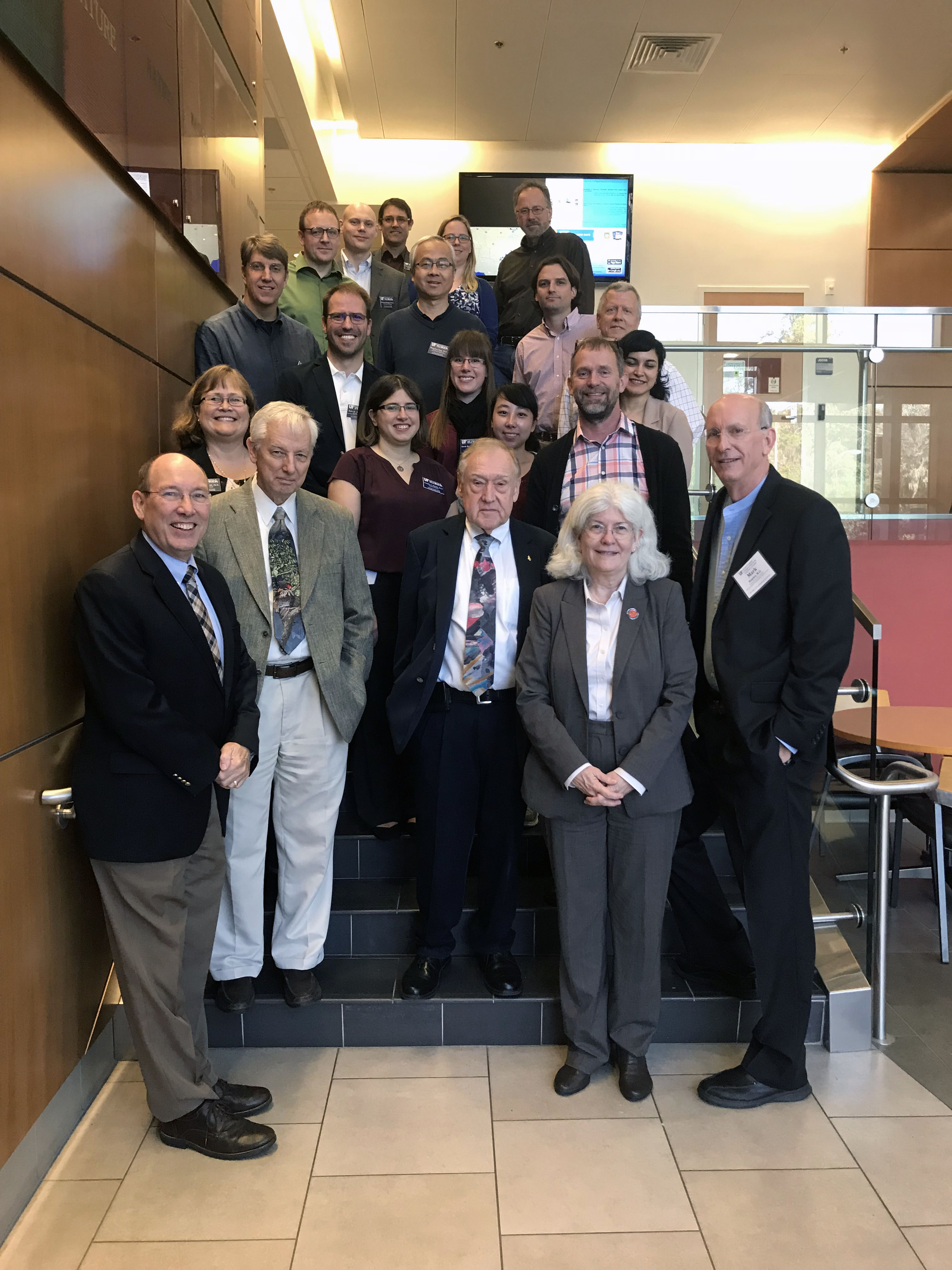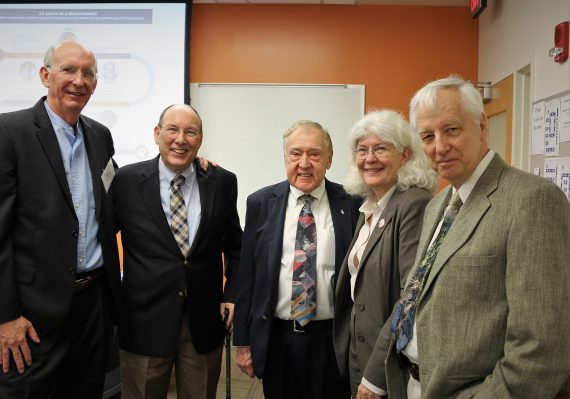The J. Crayton Pruitt Family Department of Biomedical Engineering is celebrating its 15th anniversary as a department. Established as a formal department in 2002, BME has been a national leader in interdisciplinary research, both basic and translational, from neural engineering to imaging to regenerative medicine.
Commemorating the milestone started with Pruitt Research Day on November 17, 2017. Two pivotal leaders in the early development of the BME program gave the keynote speeches, Dr. Christopher Batich, professor of Materials Science & Engineering and Dr. Anthony Brennan, Margaret A. Ross Professor of Materials Science & Engineering. Batich and Brennan shared not only the successes of their research program but also reflected on the early days of the biomedical engineering field and BME at UF.
 The festivities concluded with a celebration luncheon this week which included BME faculty, Dean Cammy Abernathy, Drs. Mark Staples, Christopher Batich, Anthony Brennan and Winfred Phillips.
The festivities concluded with a celebration luncheon this week which included BME faculty, Dean Cammy Abernathy, Drs. Mark Staples, Christopher Batich, Anthony Brennan and Winfred Phillips.
• Under the leadership of Dr. Cammy Abernathy, Dean of the Herbert Wertheim College of Engineering, the program has excelled in leadership and innovation
• Staples, cardiothoracic surgeon at the Malcom Randall VA Medical Center, operated on Dr. Pruitt, Sr. for his open-heart surgery in 1995. Staples connected Pruitt to a biventricular assist device that would keep him alive while he waited for a donor
• Batich started a formal biomedical engineering program at UF
• Brennan was the first graduate coordinator in BME and led the program to 75 students in 1997
• Phillips was the Dean of Engineering during the 8os and led the BME department to its fruition
Please continue to engage with us as we look forward to the years ahead!
Brief History:
In the mid-80s, faculty members George Piotrowski (mechanical engineering), Gary Miller (orthopedics), Robert Hirko (aeronautical engineering), and Christopher Batich (materials science and engineering) started a course of study in BME
A decade later, Dean Win Phillips asked Batich to make a significant effort to start a formal biomedical engineering program. Batich organized the Biomedical Engineering Graduate Academic Program Committee (BEGAP), formed by picking key faculty participants from several involved departments.
The committee included Richard Dickinson and Dinesh Shah (chemical engineering); Roger Tran-Son-Tay and Edward Walsh (aeronautical engineering); Andrew Laine (computer and information science and engineering); John Harris and José Principe (electrical and computer engineering); Wesley
Bolch and David Hintenlang (nuclear engineering); Bill Tiederman (mechanical engineering chair); and Richard Melker and Hans van Oostrum (anesthesiology).
The Whitaker Foundation provided a $1M grant (with a $1M match from the state) to get the program up and running in anticipation of its becoming a full-fledged department in the future. In 1997, a curriculum was produced and the first class of 13 students enrolled that fall.
Tony Brennan (materials science and engineering) became the first graduate coordinator in BME. Brennan’s hard work allowed the program to grow to 75 students. In 2000, medical doctor J. Crayton Pruitt Sr. generously endowed the BME program with a $2 million gift to get the department started. In 2001, the new engineering dean, Pramod Khargonekar, accepted the challenge of making the BME department a reality.
